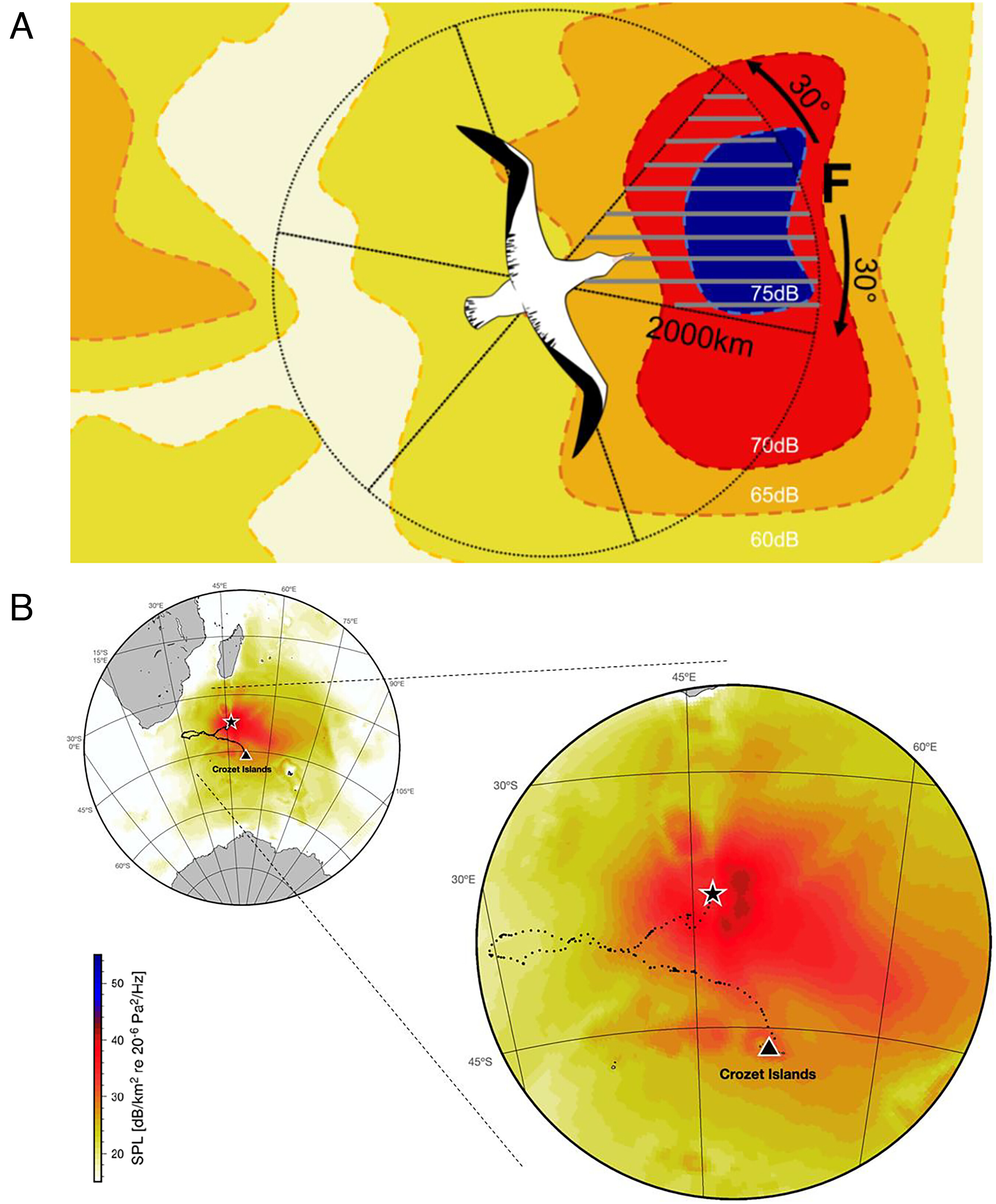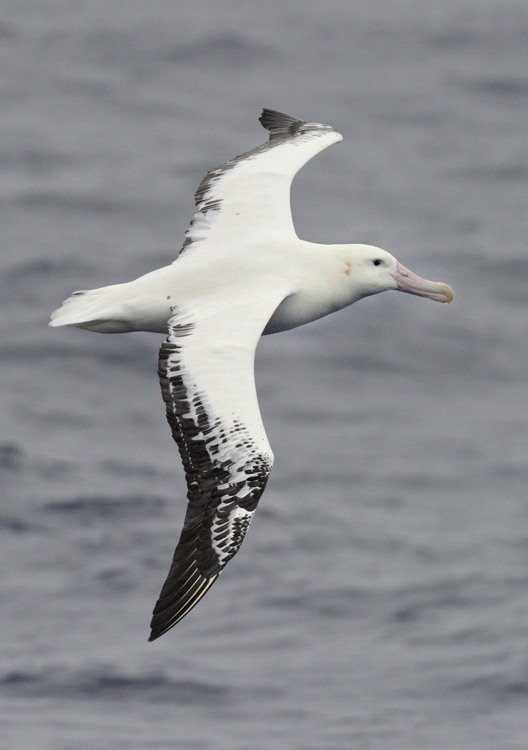
The schematic illustrates the analysis approach. The microbarom soundscape is represented by coloured contours; the bird’s track is shown from the Crozet Islands, see the paper’s Figure 1 for a full explanation
Natasha Gillies (School of Environmental Sciences, University of Liverpool, United Kingdom) and colleagues have published in the online journal PNAS on GPS-tracked Vulnerable Wandering Albatrosses Diomedea exulans at sea preferentially moving toward regions of ‘loud’ infrasound.
The paper’s abstract follows:
“The ways in which seabirds navigate over very large spatial scales remain poorly understood. While olfactory and visual information can provide guidance over short distances, their range is often limited to 100s km, far below the navigational capacity of wide-ranging animals such as albatrosses. Infrasound is a form of low-frequency sound that propagates for 1,000s km in the atmosphere. In marine habitats, its association with storms and ocean surface waves could in effect make it a useful cue for anticipating environmental conditions that favor or hinder flight or be associated with profitable foraging patches. However, behavioral responses of wild birds to infrasound remain untested. Here, we explored whether wandering albatrosses, Diomedea exulans, respond to microbarom infrasound at sea. We used Global Positioning System tracks of 89 free-ranging albatrosses in combination with acoustic modeling to investigate whether albatrosses preferentially orientate toward areas of ‘loud’ microbarom infrasound on their foraging trips. We found that in addition to responding to winds encountered in situ, albatrosses moved toward source regions associated with higher sound pressure levels. These findings suggest that albatrosses may be responding to long-range infrasonic cues. As albatrosses depend on winds and waves for soaring flight, infrasonic cues may help albatrosses to identify environmental conditions that allow them to energetically optimize flight over long distances. Our results shed light on one of the great unresolved mysteries in nature, navigation in seemingly featureless ocean environments.”
 A Wandering Albatross in the Drake Passage, photograph by Kirk Zufelt
A Wandering Albatross in the Drake Passage, photograph by Kirk Zufelt
Read a commentary in PNAS by Lesley Thorne here and a popular account by study co-author Samantha Patrick here.
Reference:
Gillies, N., Martín López, L.M. & Patrick, S.C. 2023. Albatross movement suggests sensitivity to infrasound cues at sea. PNAS doi.org/10.1073/pnas.221867912.
John Cooper, Emeritus Information Officer, Agreement on the Conservation of Albatrosses and Petrels, 08 February 2024

 Español
Español  English
English  Français
Français